
Mastering the art of search engine optimization is not a one-time activity; it’s an ever-evolving discipline. If your aim is to rank higher on Google, you need to employ strategic and practical techniques. These strategies are essential for standing out in the immense digital landscape and gaining organic website traffic.
Below, I’ve highlighted some indispensable strategies to help your website rank higher on Google:
- Effective Keyword Research: An essential beginning in SEO strategies, ensuring that your content aligns with what users are searching for.
- On-site SEO Optimization: This involves tweaking elements on your website, such as title tags and meta descriptions, to improve visibility.
- Increasing Page Load Speed: A faster website not only improves user experience but also positively influences your ranking on Google.
- Mobile Optimization: As mobile searches continue to grow, having a mobile-friendly website is no longer optional but a necessity.
- High-Quality Backlinks: This builds trust and authority, helping you climb the SERP rankings faster.
- User Experience Enhancement: A well-designed user interface keeps visitors engaged and lowers bounce rates.
By applying these strategies, you will boost your chances of appearing prominently in Google’s search results.
Key Takeaways to Rank Higher on Google
Effective keyword research is the bedrock of any successful SEO strategy.
Crafting a mobile-friendly website is not just a trend; it’s a crucial factor in Google’s ranking algorithm.
User experience enhancement doesn’t just retain customers; it plays a significant role in deciding whether or not you rank higher on Google.
Performing Effective Keyword Research
Underpinning every successful SEO campaign is comprehensive keyword research.
Understanding your business objectives is a primary factor; knowing your target audience needs and defining distinct goals for your SEO strategy will strongly influence your keyword choices.
Brainstorming is another important step; tools like Google Keyword Planner can help identify what exactly users are searching for, enabling you to find relevant long-tail keywords.
Likewise, studying your competitors’ websites allows you to recognize gaps in their strategies and learn from their strengths and weaknesses.
Understanding natural language search trends aids in selecting more user-centric, natural and long-tail keywords.
With these in mind, a comprehensive list of target keywords, known as a seed list, can be built using brainstorming, competitor research, and keyword tools’ findings.
This list requires continual refinement using metrics like search volume and competition level.
Consider the profitability and cost of each keyword; use tools to cluster and categorize them effectively.
Once done, it’s key to infuse this refined list into your content following SEO copywriting guidelines.
Using tools such as SEMrush or Majestic will further assist with keyword research and analysis.
Remember to continually monitor keyword performance and adjust the strategy as necessary.
Stay ahead of the curve by keeping updated with latest trends and evolution in keyword usage and selection.
Mindfully avoid overemphasis on short-tail keywords; while they usually have higher search volume, long-tail keywords can deliver better conversion due to their specificity.
Avoid the mistake of ignoring these long-tail options as they hold potential for less competition.
Bear in mind that effective SEO management includes a balanced approach between these two types of keywords.
Avoid over-optimization of your content. Prioritize value and relevance over using an excessive number of keywords in your posts.
Let the natural flow of language guide keyword distribution to maintain both quality and relevance.
Essentially, transform these keyword considerations into a well-rounded SEO strategy.
Implementing on-site SEO Strategies

Bolstering your website’s visibility on Google requires careful implementation of on-site SEO strategies.
It’s about understanding what makes certain content attractive for backlinks and then using that knowledge to your advantage.
Creating a Link-Worthy Hook
One compelling method is the establishment of a ‘Hook’. In this scenario, a ‘Hook’ is a standout feature within your content causing others in your field to want to link with it. Statistics, data, or ultimate guides often serve this purpose well.
Optimizing On-Page SEO
Getting intimate with on-page SEO techniques can prove beneficial for your site’s ranking.
These techniques revolve around facilitating Google’s indexing process and directing authority where it’s needed.
Boosting Authority with Internal Linking
One primary method is internal linking, where high-authority pages within your site link to other pages deserving more recognition.
In addition, using header tags, title tags, and alt text optimizes your content and makes it easier for Google to index.
To learn more about advanced SEO strategies, consider visiting Backlinko, an important resource offering rich insights into this field.
Taking the above steps will not only improve your ranking but also provide users with a rich experience by answering their queries effectively.
Remember, the goal here is to be as helpful and succinct as possible through the delivery of clear and reliable information.
Increasing Page Load Speed

The speed at which your web page loads significantly influences your ranking on Google.
Measuring this speed can involve analyzing the “page load time,” which accounts for when a visitor’s browser can fully load your site, or the “time to first byte,” reflecting how quickly the initial data is received from your server.
- Enable compression: Compression allows your CSS, HTML and JavaScript files larger than 150 bytes to be compacted into smaller files, leading to a faster site. This technique, however, should not be used with images.
- Minify CSS, JavaScript, and HTML: Minification process removes unnecessary characters from code such as spaces or commas. Google suggests tools like CSSNano or UglifyJS to optimize website performance.
- Reduce redirects: Multiple redirections increase waiting time for HTTP requests to be completed. Aim for fewer URL redirects.
- Avoid render-blocking JavaScript: This element causes browser delay during page rendering by forcing it to stop and execute the script before continuing with other tasks.
Beyond these tips, leveraging browser caching is another effective way to improve page load speed. Browsers are capable of storing plenty of information so that they don’t need to reload everything when a user revisits your site.
To find if you’re already implementing this strategy, you can use tools like YSlow.
Your webpage speed could affect user experience negatively, resulting in higher bounce rates and less time spent on page.
Furthermore, a slow speed limits search engine’s ability to crawl your pages within their allocated budget, potentially leading to indexing issues.
Creating High-Quality, Valuable Content
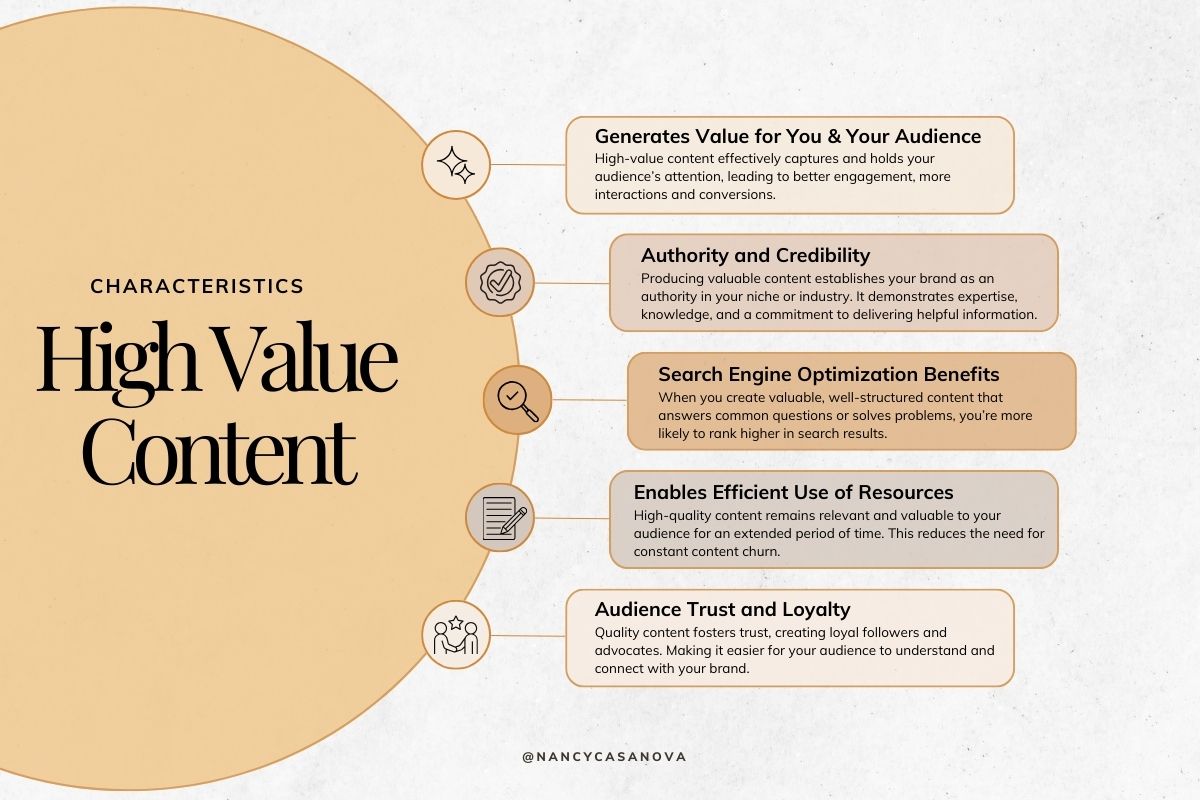
When crafting an effective content strategy, bear in mind the importance of marketing funnels. Your distinctive content should be engaging, ensuring it pulls in readers at all stages of the funnel.
Content pillars work as attractors for top-of-the-funnel consumers, who might not be prepared to purchase but are interested in a particular topic.
For instance, an email newsletter sign-up form could be used as a tool to facilitate readers desiring more detailed content. This not only draws them into your ecosystem but also aids in acquiring contact details.
Furthermore, blogs covering SEO subtopics are ideal for appealing to bottom-of-the-funnel consumers.
Sometimes, mentioning products with relevant links could be sufficient to convert these leads. Thus, every stage of the marketing funnel has its distinct approach.
Analyze your competitors to get valuable insights. Extensive and careful observation often helps spot potential weaknesses that your brand can leverage on.
Identifying what works best for them can guide you in developing your marketing strategy.
The wealth of useful information you’ll uncover through competitive research will serve as a sturdy foundation for your efforts towards success.
Optimizing Website for Mobile Devices
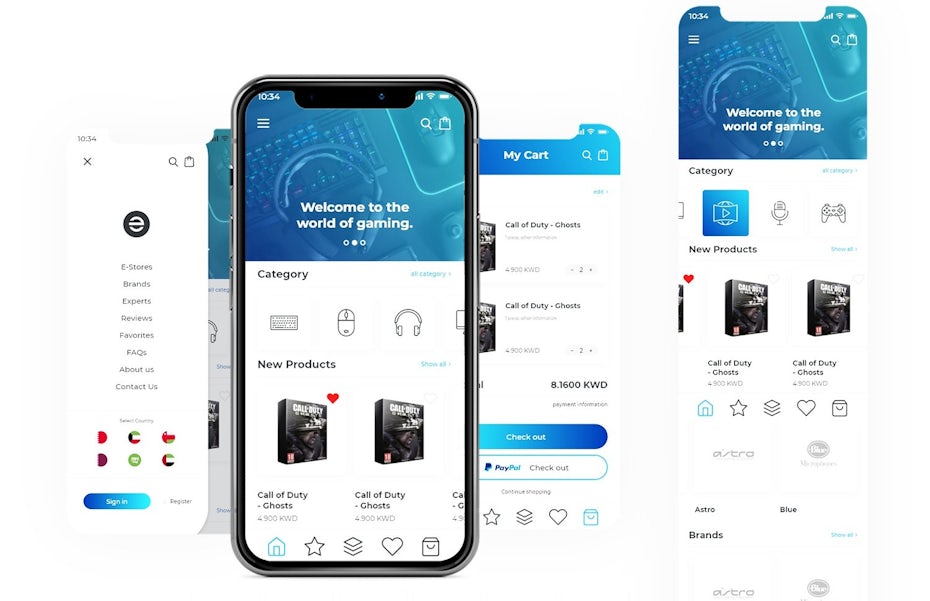
For an optimized mobile website, embracing a mobile-first approach is a must.
This principle is rooted in the idea that designing for smaller screens first and scaling up is more effective.
Rather than downsizing a broader design to fit a smaller device, you start small and enhance it for larger screens.
Another critical strategy for optimizing mobile sites involves reducing data downloaded (reducing HTTP requests and total bytes transferred).
Compressing files, keeping low file sizes for HTML and CSS files and using asynchronous loading can go a long way in enhancing the user experience on mobile devices.
| Strategy | Description | Benefits |
|---|---|---|
| Mobile-First Approach | Designing for the smaller screen first before scaling up. | Sites are more user-friendly and easier to navigate on mobile. |
| Data Reduction | Reducing HTTP requests & total bytes transferred. | Faster page load times, improving user experience. |
| Responsive Design | Ensuring adaptability to various screen sizes. | Makes content accessible on different devices. |
| Asynchronous Loading | Loading JavaScript and CSS files not in sequence. | Makes pages appear faster. |
| Compressed Files | Reduction of file sizes. | Requires less bandwidth to load the page. |
Furthermore, implementing a responsive design that can adapt to different screen sizes is essential.
This is accomplished by utilizing flexible grids and responsive images, ensuring content remains visually pleasing and easily accessible on a wide range of devices.
Incorporating LSI Keywords into Content

Creating relevant online content often sparks a relentless quest to outwit Google’s algorithms.
One proven tactic revolves around Latent Semantic Indexing (LSI) Keywords. This approach ensures your content’s context aligns with both the user intent and search bots.
Understanding LSI Keywords
LSI Keywords are related words or phrases that provide more depth to the context of your content. They’re not synonyms; rather, they’re terms commonly found in tandem with your primary keywords.
Identifying Your LSI Keywords
You can leverage various tools to identify appropriate LSI keywords for your blog posts.
For example, over at Neil Patel, there are several practical methods to find and incorporate these keywords seamlessly into your articles.
The Magic of LSI Keywords
Google uses these keywords to understand the semantic relevance and overall context of your content. Thus, when you integrate them, it enhances the accuracy of search engine results and can elevate your search ranking.
Balancing Keyword Use
Always remember to maintain balance. Misusing these words or keyword stuffing leads not only to lower rankings but might also result in penalties from Google.
Monitoring and Improving Technical SEO
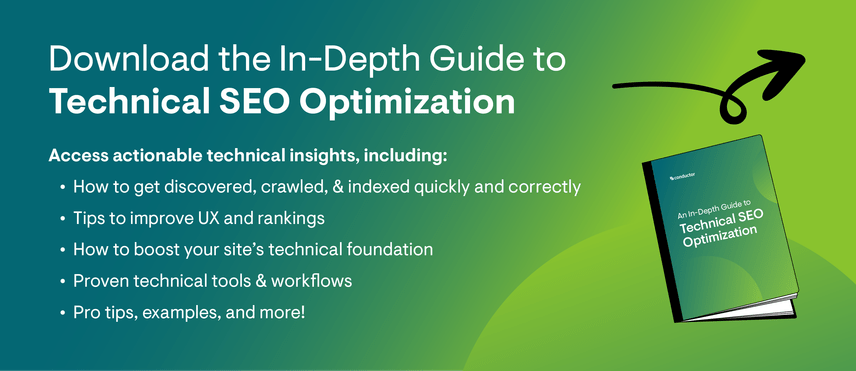
Improving technical SEO holds great value when aiming to rank higher on Google.
This process focuses on enhancing certain technical aspects of your website, including its crawlability by search engine robots, the structured data it presents, and its page loading speed.
By taking care of these elements, you get to provide an improved user and search engine experience.
- Ensure effective crawlability: This helps search engines easily understand and index your site.
- Improve page loading speed: A rapid page loading speed enhances user experience and boosts your ranking.
- Structured data optimization: The clearer the data you present, the better search engines understand your content.
Taking steps to correct technical issues can massively uplift your website’s positioning in SERPs.
Conversely, any technical missteps might hinder your site’s ranking prospects. Therefore, regular auditing for such elements is crucial.
You can enrich your understanding of the topic with some excellent resources like SEO webinars and guides.
Also, consider enrolling in specific online courses focused on technical SEO, such as those provided by Yoast SEO.
They offer a structured data course for beginners and an advanced training regimen covering hosting and server configuration, along with crawlability and indexability.
Targeting Long-Tail, Question Keywords
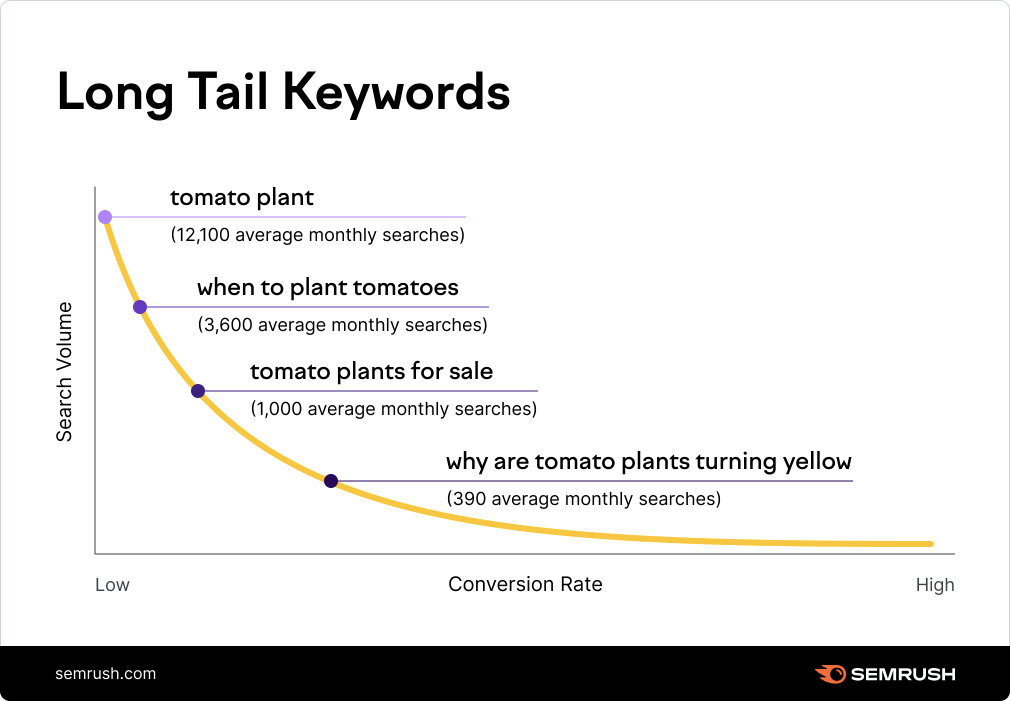
The use of long-tail, question keywords is a pivotal strategy in achieving higher Google rankings. The emphasis is on detailed, informational queries that clearly signify a user’s search intent, such as “best earplugs for sleeping small ears.”
- Choosing informational long-tail keywords: These involve specifics like product reviews or comparisons. For instance, FAQs are an excellent content type for these keywords.
- Focusing on navigational long-tail keywords: These direct searchers to particular content or product pages. If users frequently search for a product category that lacks a dedicated page, consider creating one to enhance UX and improve rankings.
- Implementing transactional long-tail keywords: These typically include phrases related to discounts or unique deals, targeting users seeking specific offers. Think about using words like “discounts on waterproof Bluetooth speakers” for your e-commerce shop.
Selecting the right long-tail keyword requires analyzing the queries that align best with your content and business.
It’s also crucial to differentiate between informational, navigational, and transactional queries, which necessitate different content approaches.
A clear understanding of the search intent behind these queries helps in creating tailored content that aptly answers users’ questions or meets their needs.
This forms the cornerstone of delivering a rich user experience since it offers value, increases efficiency, and aids in informed decision-making.
Building High-Quality Backlinks

What are some practical ways to generate high-quality backlinks?
The process of generating high-quality backlinks can be enriched with data analysis.
In exploring our tools, we came across an intriguing development with ChatGPT based on a post by Rand Fishkin.
The data showed that programmers made up 30% of its users and that usage declined by 29% between May and August 2023. A correlation perhaps?
Such valuable insights can be extracted from multiple data sources.
Ahrefs’ Keywords Explorer or Google Trends allow you to unravel compelling search trends or growth patterns in real-time.
How could proprietary data aid in building backlinks?
If your organization or client possesses niche-specific data, sharing unique insights can garner significant attention. We’ve found that simply identifying a worthwhile pattern and broadcasting it via press release can attract journalists who cover related topics.
Why is creating statistic pages considered as a good link-building tactic?
We’ve done extensive work on crafting ‘statistics’ pages, which are basically compilations of industry-specific facts and figures.
These pages continue to garner evergreen links as long as the statistics remain pertinent. We’ve used this approach quite effectively over the years.
If you’re interested, head over to Ahrefs’ Keywords Explorer and start your journey by entering broadly related topics.
Applying certain filters like ‘stats’, ‘facts’, or ‘figures’ will help you pinpoint relevant content themes you might want to explore more.
Can relationship-based link-building boost my ranking?
Indeed! Building relationships with journalists and editors has proven to be effective.
For instance, the growth marketing firm, EngineRoom, achieved amazing results by not only addressing one-off journalist requests, but also providing them with future story resources from their client base.
This approach culminates in a genuine partnership that keeps churning out high-quality backlinks.
In a nutshell, quality content backed by solid data and great relationships form the bedrock of a successful backlinking strategy.
Enhancing User Experience Through Design

In the digital marketing sphere, boosting your visibility on Google not only revolves around SEO but also leans heavily towards enhancing user experience through design.
An intuitive and user-friendly UI/UX design heightens your users’ satisfaction, leading to more traffic to your site.
A Clear and Concise Layout Matters
Your website layout holds the reins of viewer interaction. The simpler it is to navigate, the higher are chances for your audience to stay. Avoid complexity; instead, opt for a design that directly communicates the core message.
Integrate Visual Appeal for Enhanced UX
No person wants to visit a bland website. An attractive, visually pleasing site can capture your visitor’s attention, compelling them to explore more. Coupled with functional elements, appealing aesthetics can drastically boost your UX.
The Role of Mobile Optimisation
Given the widespread use of mobile devices, a responsive and mobile-optimized site is integral for a great UX.
Users should enjoy seamless access on diverse screens without sacrificing aesthetics or navigation quality.
Invest in an outstanding UX/UI design — it’s an investment that will likely prove instrumental in catapulting your Google ranking.
Becoming a Data Source for Google

Stepping into the world of search engine rankings can seem complex.
But, it all comes down to understanding how Google’s data processing works. You must strive to become a credible and reliable data source for Google.
How? Let’s delve into the details.
- Understand Google’s Algorithm: This algorithm isn’t something that has been leaked or made public knowledge. Its inner workings remain wrapped in mystery. Instead, focus on factors that are known and controllable, such as content quality, keywords usage, and mobile optimization.
- Focus on Context: Pedro Dias, an ex-Googler, emphasized the importance of context in interpreting Google’s data. Hence, make sure your content is relevant and fits the context accurately for better interpretation by Google.
- Maintain Relevance: The relevancy of your content is key. Unrelated materials may confuse the algorithm, leading your site to be pushed lower in search results.
- Engage in Healthy Discussion: According to Dias, open conversation regarding SEO practices helps everyone understand them better.
Avoid jumping to conclusions based on rumors about Google’s algorithms or unverified data dumps. The focus should always be on creating high-quality, contextually accurate content that caters to readers’ needs.
Lastly, remember that every piece of content acts as an interaction with Google’s algorithm – so consistency in publishing high-quality material is key.
Ultimately, only helpful and succinct content tailored according to users’ needs will consistently rank higher on Google.
Utilizing Google Business for SEO
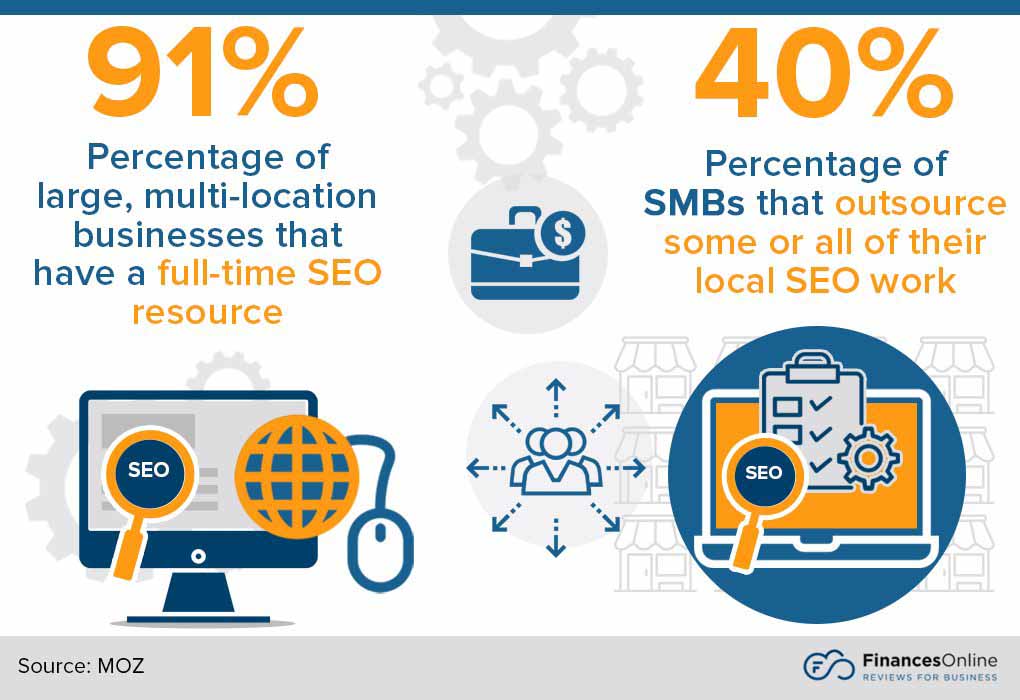
To elevate your brand’s visibility on Google, leveraging Google Business Profile is a definitive approach.
Claiming and updating your business information should be made a priority.
It’s important to provide comprehensive and accurate details about your business, such as the physical address, contact details, category, and unique attributes.
Prominence plays a significant role in local search likelihood, which is dictated by online reputation and the prominence of your company’s data across the web. This includes any links, articles, or online directories that mention your business.
“Google review count and review score are powerful determinants of local search ranking.”
Incorporating long-tail keywords into your Google Business Profile optimizes visibility. Such targeted searches not only increase potential customers but also attract highly-qualified ones.
To further amplify the benefits, ensure that your website has a sound structure, it loads quickly and is compatible with all mobile devices.
Simultaneously, try to attain organic links from other websites by maintaining an active blog or relevant onsite content.
A commitment to providing quality content on your website will pay dividends in improving local ranking on Google. SEO tactics should focus on optimizing website structure, decreasing load times, making it mobile-friendly, and fostering organic links.
Securing Top Spots
Mastering SEO is vital for high Google rankings. Relevant, keyword-rich content and user-friendly design are key. Furthermore, harness the power of backlinks, ensure mobile optimization, and leverage local SEO tactics. Adapt to Google’s algorithm updates and focus on long-term strategies rather than quick fixes. Ultimately, patience and consistency pay off in the world of SEO.
